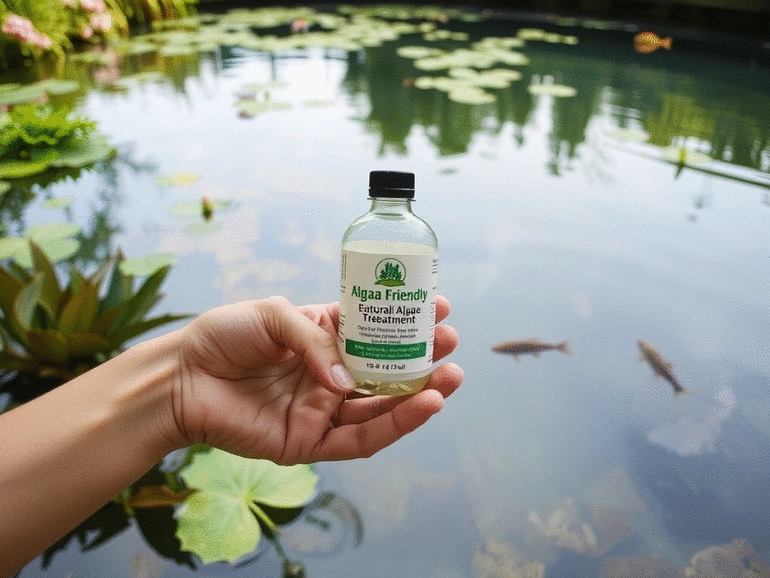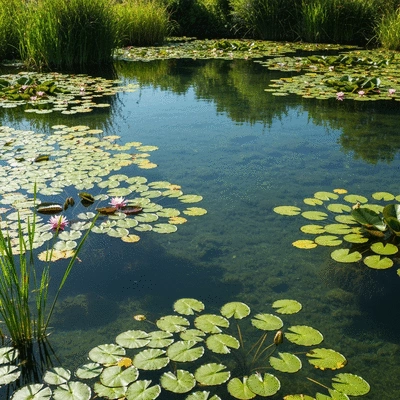
Understanding the delicate balance of your pond's ecosystem can transform your experience as a pond owner. It’s not just about beauty; it’s about fostering a thriving aquatic environment. Let's explore essential insights for successful algae control and pond management!
Understanding the key factors contributing to algae growth, its effects on pond ecosystems, and effective eco-friendly management strategies is crucial for maintaining a healthy aquatic environment. Below, we compare these core aspects of pond care.
Maintaining a healthy pond environment is crucial for its ecosystem, but controlling algae growth can often feel like a daunting task. Algae can quickly take over, impacting not only the beauty of your pond but also the health of its inhabitants. In this section, we’ll explore the underlying causes of algae growth, its effects on your pond, and how to identify various types of algae blooms.
Understanding the dynamics of algae is the first step in effective pond management. By learning about the causes and consequences of algae growth, you're better equipped to create a balanced ecosystem where aquatic life can thrive. So, let’s dive into the details!
Algae growth is often fueled by factors such as excess nutrients, sunlight, and stagnant water. Here are the key contributors:
Recognizing these causes helps in taking proactive measures. For instance, managing nutrient runoff from your lawn can significantly reduce algae growth. Have you assessed the factors contributing to algae in your pond yet?
Algae, while a natural part of the aquatic ecosystem, can become problematic when it grows excessively. The consequences include:
Understanding these impacts can encourage pond owners to prioritize algae control methods. It's essential to create a balanced environment where both plants and animals can thrive. What challenges have you faced with algae in your pond?
Not all algae are created equal, and knowing how to identify different types can help you manage them effectively. Common algae blooms include:
Identifying these blooms promptly is important for effective management. If you notice any of these types, it may be time to implement control strategies. How have you addressed algae blooms in your pond before?

As a pond care expert, I believe in using eco-friendly solutions for managing algae. These methods not only help maintain a balanced ecosystem but also protect the local environment. Below, I’ll share some effective strategies to consider.
Implementing these strategies can make a significant difference in the health of your pond. Let’s explore how we can promote a thriving aquatic ecosystem together!
For effective algae control, consider introducing beneficial bacteria into your pond. These natural organisms can outcompete algae for nutrients, helping to maintain a balanced ecosystem without the use of harsh chemicals. Regularly monitoring water quality and adjusting the nutrient levels can also play a crucial role in preventing algae blooms!
When it comes to maintaining a healthy pond, understanding the cost-effectiveness of eco-friendly algae control solutions is crucial. Not only do these methods protect the environment, but they also save money in the long run! By exploring both DIY and commercial options, pond owners can make informed decisions that suit their budgets and needs.
At Clear Pond Solutions, I often recommend starting with DIY solutions as they can be quite effective. For example, using barley straw, which is not only budget-friendly but also environmentally beneficial, can help significantly reduce algae growth. On the other hand, if a major algae bloom occurs, investing in a UV sterilizer could be the right choice for quick clarity.
It's always inspiring to see successful stories from fellow pond owners who have navigated their algae challenges. Here are a few real-world examples that illustrate how eco-friendly practices can lead to thriving pond ecosystems:
These examples highlight that with a little creativity and effort, anyone can achieve a healthy pond environment. Engaging with local communities to share experiences can be an essential part of this journey!

Community involvement plays a vital role in the successful management of ponds. By sharing experiences, challenges, and triumphs, pond owners can inspire one another to take action! Here are ways to foster community engagement:
At Clear Pond Solutions, I love hearing from our readers about their journeys in pond management. Stories of triumph can motivate others to adopt similar practices, leading to a more widespread commitment to sustainable pond care!
Pond ownership shouldn't be a solitary journey! Encouraging community involvement can strengthen local ecosystems and build camaraderie among pond enthusiasts. Here are some effective ways to promote engagement:
When the community comes together, we can achieve great things! Together, we can create cleaner, healthier ponds that benefit everyone.
By engaging in community efforts, we can also promote biodiversity conservation. Protecting our ponds not only benefits aquatic life but also the entire ecosystem. Here’s how community involvement can have a positive impact:
By working together, we can create a ripple effect that enhances not only our ponds but also the surrounding environment. Every small action counts, and when we unite in our efforts, we can make a significant difference!
Ready to take your pond management to the next level? Here are some actionable steps to get started on your eco-friendly journey:
Every pond owner can play a part in nurturing healthier ecosystems. By taking these steps, you can contribute to creating a more sustainable future for our aquatic environments!
For those looking for more specialized help, consulting professionals can be a game-changer. Experts in pond management can provide tailored solutions and support to address specific challenges. Here are some benefits of seeking professional assistance:
Don't hesitate to reach out to experts if you're feeling overwhelmed—sometimes, a little professional guidance can go a long way!
Finally, consider integrating integrated pest management (IPM) into your pond care routine. This holistic approach focuses on preventing problems before they arise, ensuring that your pond remains a vibrant habitat. Here are some key components of IPM:
By adopting IPM strategies, you can enjoy a thriving pond while minimizing the use of chemical interventions. Together, let’s make pond care a sustainable and enjoyable journey!
Here are some common questions about managing algae in ponds:
Here is a quick recap of the important points discussed in the article:
At Clear Pond Solutions, we empower you with expert guidance and eco-friendly solutions to create and maintain pristine, healthy pond ecosystems. Your thriving pond is our priority.
